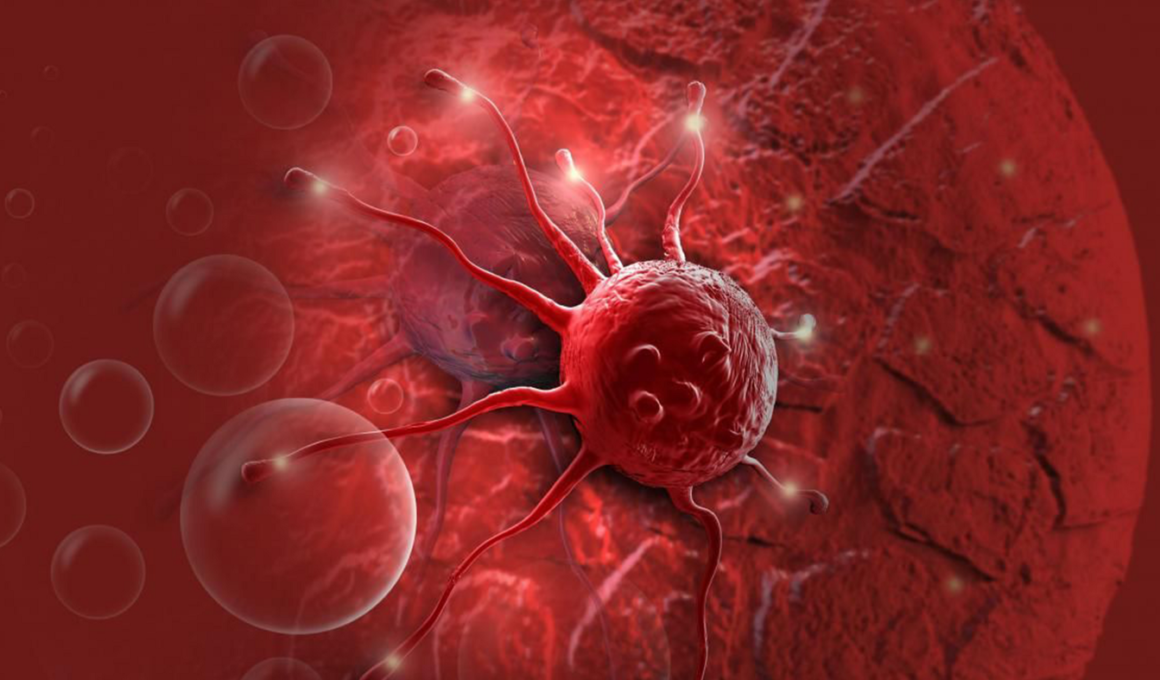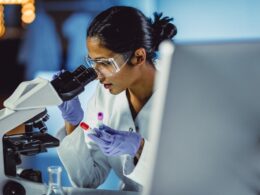WHO — World Health Organization
3 March 2021
Cancer is a generic term for a large group of diseases that can affect any part of the body. Other terms used are malignant tumours and neoplasms. One defining feature of cancer is the rapid creation of abnormal cells that grow beyond their usual boundaries, and which can then invade adjoining parts of the body and spread to other organs; the latter process is referred to as metastasis. Metastases are the primary cause of death from cancer.
The problem
Cancer is a leading cause of death worldwide, accounting for nearly 10 million deaths in 2020 (1).
The most common in 2020 (in terms of new cases of cancer) were:
- breast (2.26 million cases);
- lung (2.21 million cases);
- colon and rectum (1.93 million cases);
- prostate (1.41 million cases);
- skin (non-melanoma) (1.20 million cases); and
- stomach (1.09 million cases).
The most common causes of cancer death in 2020 were:
- lung (1.80 million deaths);
- colon and rectum (935 000 deaths);
- liver (830 000 deaths);
- stomach (769 000 deaths); and
- breast (685 000 deaths).
What causes cancer?
Cancer arises from the transformation of normal cells into tumour cells in a multi-stage process that generally progresses from a pre-cancerous lesion to a malignant tumour. These changes are the result of the interaction between a person’s genetic factors and three categories of external agents, including:
- physical carcinogens, such as ultraviolet and ionizing radiation;
- chemical carcinogens, such as asbestos, components of tobacco smoke, aflatoxin (a food contaminant), and arsenic (a drinking water contaminant); and
- biological carcinogens, such as infections from certain viruses, bacteria, or parasites.
WHO, through its cancer research agency, the International Agency for Research on Cancer (IARC), maintains a classification of cancer-causing agents.
The incidence of cancer rises dramatically with age, most likely due to a build-up of risks for specific cancers that increase with age. The overall risk accumulation is combined with the tendency for cellular repair mechanisms to be less effective as a person grows older.
Risk factors for cancers
Tobacco use, alcohol use, unhealthy diet, physical inactivity and air pollution are risk factors for cancer (and other noncommunicable diseases).
Some chronic infections are risk factors for cancer; this is a particular issue in low- and middle-income countries. Approximately 13% of cancers diagnosed in 2018 globally were attributed to carcinogenic infections, including Helicobacter pylori, human papillomavirus (HPV), hepatitis B virus, hepatitis C virus, and Epstein-Barr virus (3).
Hepatitis B and C viruses and some types of HPV increase the risk for liver and cervical cancer, respectively. Infection with HIV substantially increases the risk of cancers such as cervical cancer.
Reducing the cancer burden
Between 30 and 50% of cancers can currently be prevented by avoiding risk factors and implementing existing evidence-based prevention strategies. The cancer burden can also be reduced through early detection of cancer and appropriate treatment and care of patients who develop cancer. Many cancers have a high chance of cure if diagnosed early and treated appropriately.
Preventing cancer
Cancer risk can be reduced by:
- not using tobacco;
- maintaining a healthy body weight;
- eating a healthy diet, including fruit and vegetables;
- doing physical activity on a regular basis;
- avoiding harmful use of alcohol;
- getting vaccinated against HPV and hepatitis B if you belong to a group for which vaccination is recommended;
- avoiding ultraviolet radiation (which primarily results from exposure to the sun and artificial tanning devices);
- ensuring safe and appropriate use of radiation in health care (for diagnostic and therapeutic purposes);
- minimizing occupational exposure to ionizing radiation; and
- reducing exposure to outdoor air pollution and indoor air pollution, including radon (a radioactive gas produced from the natural decay of uranium, which can accumulate in buildings — homes, schools and workplaces).
Early detection
Cancer mortality can be reduced if cases are detected and treated early. There are two components of early detection:
Early diagnosis
When identified early, cancer is more likely to respond to treatment and can result in a greater probability of survival and less morbidity, as well as less expensive treatment. Significant improvements can be made in the lives of cancer patients by detecting cancer early and avoiding delays in care.
Early diagnosis consists of three components:
- being aware of the symptoms of different forms of cancer and of the importance of seeking medical advice if you are concerned;
- access to clinical evaluation and diagnostic services; and
- timely referral to treatment services.
Early diagnosis of symptomatic cancers is relevant in all settings and the majority of cancers. Cancer programmes should be designed to reduce delays in, and barriers to, diagnosis, treatment and care.
Screening
Screening aims to identify individuals with findings suggestive of a specific cancer or pre-cancer before they have developed symptoms. When abnormalities are identified during screening, further tests to establish (or not) a diagnosis should follow, as should referral for treatment if needed.
Screening programmes are effective for some but not all cancer types and in general are far more complex and resource-intensive than early diagnosis as they require special equipment and dedicated personnel.
Patient selection for screening programmes is based on age and risk factors to avoid excessive false positive studies. Examples of screening methods are:
- HPV testing for cervical cancer;
- the PAP cytology test for cervical cancer;
- visual inspection with acetic acid (VIA) for cervical cancer; and
- mammography screening for breast cancer in settings with strong or relatively strong health systems.
Quality assurance is required for both screening and early diagnosis programmes.
Treatment
A correct cancer diagnosis is essential for appropriate and effective treatment because every cancer type requires a specific treatment regimen. Treatment usually includes radiotherapy, chemotherapy and/or surgery. Determining the goals of treatment is an important first step. The primary goal is generally to cure cancer or to considerably prolong life. Improving the patient’s quality of life is also an important goal. This can be achieved by support for the patient’s physical, psychosocial and spiritual well-being and palliative care in terminal stages of cancer.
Some of the most common cancer types, such as breast cancer, cervical cancer, oral cancer, and colorectal cancer, have high cure rates when detected early and treated according to best practices.
Some cancer types, such as testicular seminoma and different types of leukaemia and lymphoma in children, also have high cure rates if appropriate treatment is provided, even when cancerous cells are present in other areas of the body.
Palliative care
Palliative care is treatment to relieve, rather than cure, symptoms caused by cancer and to improve the quality of life of patients and their families. Palliative care can help people live more comfortably. It is particularly needed in places with a high proportion of patients in advanced stages of cancer where there is little chance of cure.
Relief from physical, psychosocial, and spiritual problems through palliative care is possible for more than 90% of patients with advanced stages of cancer.
Effective public health strategies, comprising community- and home-based care, are essential to provide pain relief and palliative care for patients and their families.
Improved access to oral morphine is strongly recommended for the treatment of moderate to severe cancer pain, suffered by over 80% of people with cancer in the terminal phase.
WHO response
In 2017, the World Health Assembly passed the Resolution Cancer prevention and control in the context of an integrated approach (WHA70.12) that urges governments and WHO to accelerate action to achieve the targets specified in the Global Action Plan for the prevention and control of NCDs 2013–2020 and the 2030 UN Agenda for Sustainable Development to reduce premature mortality from cancer.
WHO and IARC collaborate with other UN organizations and partners to:
- increase political commitment for cancer prevention and control;
- coordinate and conduct research on the causes of human cancer and the mechanisms of carcinogenesis;
- monitor the cancer burden (as part of the work of the Global Initiative on Cancer Registries);
- identify “best buys” and other cost-effective, priority strategies for cancer prevention and control;
- develop standards and tools to guide the planning and implementation of interventions for prevention, early diagnosis, screening, treatment and palliative and survivorship care for both adult and child cancers;
- strengthen health systems at national and local levels to help them improve access to cancer treatments;
- set the agenda for cancer prevention and control in the 2020 WHO Report on Cancer;
- provide global leadership as well as technical assistance to support governments and their partners build and sustain high-quality cervical cancer control programmes as part of the Global Strategy to Accelerate the Elimination of Cervical Cancer;
- improve breast cancer control and reduce avoidable deaths from breast cancer, focusing on health promotion, timely diagnosis and access to care in order to accelerate coordinated implementation through the WHO Global Breast Cancer Initiative;
- support governments to improve survival for childhood cancer through directed country support, regional networks and global action as part of the WHO Global Initiative for Childhood Cancer using the CureAll approach; and
- provide technical assistance for rapid, effective transfer of best practice interventions to countries.
References
(1) Ferlay J, Ervik M, Lam F, Colombet M, Mery L, Piñeros M, et al. Global Cancer Observatory: Cancer Today. Lyon: International Agency for Research on Cancer; 2020 ( https://gco.iarc.fr/today, accessed February 2021).
(2) GBD results tool. Seattle (WA): Institute for Health Metrics, University of Washington; 2020 ( http://ghdx.healthdata.org/gbd-results-tool, accessed February 2021).
(3) de Martel C, Georges D, Bray F, Ferlay J, Clifford GM. Global burden of cancer attributable to infections in 2018: a worldwide incidence analysis. Lancet Glob Health. 2020;8(2):e180-e190.
(4) Assessing national capacity for the prevention and control of noncommunicable diseases: report of the 2019 global survey. Geneva: World Health Organization; 2020.
(5) Wild CP, Weiderpass E, Stewart BW, editors. World Cancer Report: Cancer Research for Cancer Prevention. Lyon: International Agency for Research on Cancer; 2020.
(6) Global Initiative for Cancer Registry Development. Lyon: International Agency for Research on Cancer; 2020 ( https://gicr.iarc.fr/about-the-gicr/the-value-of-cancer-data/, accessed February 2021).
Originally published at https://www.who.int on March 3, 2021.












